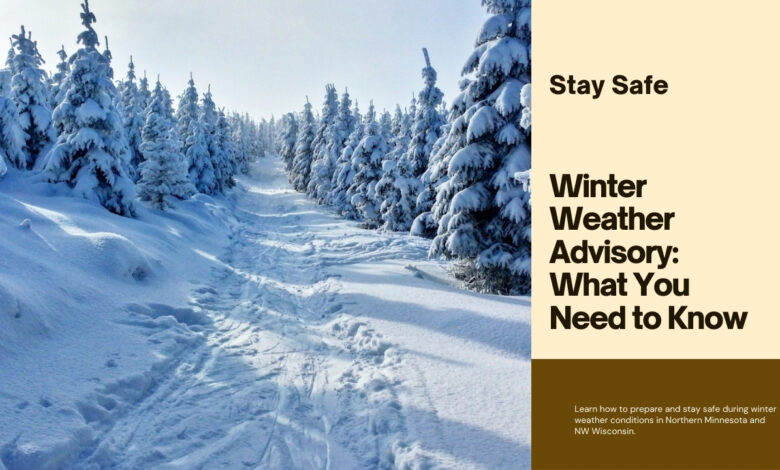Stay Safe: Comprehensive Guide to the Winter Weather Advisory in Northern Minnesota & NW Wisconsin

Introduction
As the seasons shift from fall to winter, the northern regions of Minnesota and northwest Wisconsin brace themselves for the arrival of snow, icy conditions, and plummeting temperatures. The National Weather Service has issued a winter weather advisory for these areas, urging residents to take necessary precautions and stay informed. In this comprehensive guide, we’ll delve into what the advisory means, how to prepare, and frequently asked questions related to winter weather safety.
What Is a Winter Weather Advisory?
A winter weather advisory is a cautionary notice issued by meteorological agencies to alert the public about impending winter weather conditions. It serves as an early warning system, allowing individuals and communities to prepare for potential hazards. Here are the key points to understand:
Duration: The advisory typically spans a specific time frame, during which hazardous weather conditions are expected. For northern Minnesota and northwest Wisconsin, the current advisory extends from 7 AM Thursday to 1 PM CDT Friday1.
Expected Conditions: The primary concern in this advisory is snow accumulation, with predicted totals ranging from 3 to 6 inches. Additionally, winds gusting up to 40 mph may exacerbate visibility issues due to blowing snow1.
Impact: Slippery roads and reduced visibility are likely, affecting both morning and evening commutes. It’s crucial to exercise caution while driving and allow extra time for travel.
Preparing for the Winter Weather Advisory
- Stay Informed
Monitor Updates: Regularly check weather forecasts and advisories from reliable sources such as the National Weather Service.
Emergency Alerts: Sign up for emergency alerts on your phone or through local news channels. - Home Preparedness
Supplies: Stock up on essentials like food, water, batteries, and blankets.
Heating Systems: Ensure your heating systems are functional and have backup options in case of power outages.
Insulation: Seal gaps and insulate doors and windows to retain warmth. - Travel Safety
Plan Ahead: If travel is necessary, plan routes and allow extra time.
Emergency Kit: Keep an emergency kit in your vehicle, including warm clothing, a flashlight, and non-perishable snacks.
Road Conditions: Check road conditions before heading out.
Frequently Asked Questions
1. How Much Snow Will Fall?
Focus Area: Northwest Minnesota is the primary target for snowfall, while heavier amounts are expected in North Dakota (over a foot of snow)1.
Forecast Models: NOAA’s NAM 3 km model predicts snowfall patterns, guiding emergency responses1.
2. What Are the Advisory’s Impacts?
Slippery Roads: Expect slippery road conditions.
Reduced Visibility: Blowing snow may significantly reduce visibility.
Morning and Evening Commute: Be cautious during travel times.
3. How Can I Stay Safe?
Limit Travel: If possible, avoid unnecessary travel during the advisory.
Bundle Up: Dress warmly and protect exposed skin.
Stay Updated: Follow official updates and heed safety recommendations.
Remember, preparation and vigilance are key during winter weather advisories. Stay safe, stay informed, and take care of yourself and your community